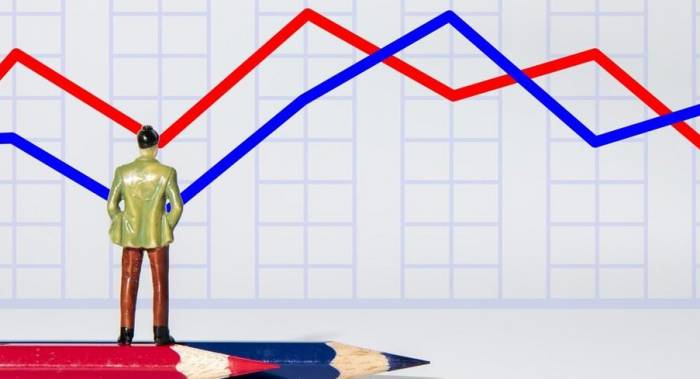NIO: Almost 100 Billion Loss in 6.5 Years!
In a notable release from NIO Inc., the electric vehicle manufacturer headquartered in Shanghai, a rather bleak financial picture emerged for the second quarter of 2024. The company reported a staggering net loss of 5.126 billion yuan, which, when combined with the previous quarter's losses, pushed NIO's total losses for the first half of the year beyond 10.3 billion yuan. This figure is emblematic of a troubling trend that has unfolded at NIO since its inception. Over the period from 2018 to 2023, the company had accumulated losses totaling approximately 86.63 billion yuan, meaning its six-and-a-half-year net losses have now exceeded a colossal 96 billion yuan.
Strikingly, despite these staggering losses, NIO's stock experienced a remarkable surge of 14.39% shortly after the financial report was unveiled. This raises an intriguing question: What underpinned such a positive reaction from investors amidst continued financial losses?
To begin with, NIO's automotive business margins surpassed market expectations with sales hitting unprecedented highs. Prior to this quarter, the company had signaled that it anticipated returning to a double-digit automotive gross margin due to a reduction in promotional activities. The market optimistically forecasted a quarter-on-quarter margin improvement to around 11% to 11.5%, yet NIO exceeded those projections, reporting a gross margin of 12.2% for their automobiles.
Advertisement
This improvement in margin is significantly attributed to a decrease in costs. In the second quarter, the average selling price per vehicle was reported at 273,000 yuan, roughly 6,000 yuan lower than the previous quarter. This price adjustment was a result of selling both older and new models simultaneously, with substantial discounts applied to the older models. Meanwhile, the cost per vehicle fell to 240,000 yuan, down 13,000 yuan from the first quarter. These figures suggest that NIO is beginning to realize economies of scale, having sold a record 57,400 vehicles in the second quarter, consequently distributing fixed costs over a larger volume of sales.
Additionally, the company renegotiated contracts with suppliers during the second quarter, leading to further savings in procurement costs. This strategic move indicates a proactive approach to managing expenses and optimizing profit margins.
Looking forward, NIO exhibited a surprisingly upbeat outlook for the third quarter, projecting delivery figures between 61,000 and 63,000 vehicles, alongside revenue estimates of 19.11 billion to 19.67 billion yuan—marking historical highs for the company. Derived from its second-quarter achievements where it delivered 57,400 new cars and revenue hit 17.446 billion yuan, NIO anticipates a quarter-on-quarter growth in sales of 6.27% to 9.76%, with revenue growth likely surpassing sales growth.
Why this anticipated revenue increase? Primarily, NIO plans to transition to selling only 2024 new models in the upcoming quarter, minimizing the impact of lower-priced older models on overall sales figures. Moreover, the previous promotional offer associated with the Battery as a Service (BaaS) model is fading, having peaked in June but now experiencing a temporary, limited revival. The short-lived nature of this offer is not expected to significantly impact the overall financial forecast for the third quarter.
In terms of valuation, during the first half of 2024, NIO reported total revenue of 27.355 billion yuan. Should revenues remain above the projected 19 billion yuan in both the third and fourth quarters, it would enable NIO's annual revenues to exceed 65.5 billion yuan. Prior to the release of the financial report, the company’s market capitalization in the U.S. corresponded to around 63.1 billion yuan, leading to an acceptable price-to-sales ratio of approximately 0.96.
This context helps illuminate the enthusiastic market response post-financial release, yet it’s crucial to acknowledge that NIO's journey is still fraught with challenges. The company is not out of the woods yet; its struggles are far from over.

Despite a temporary financial respite, the surge in sales and administrative expenses—a striking 25.38% increase in the second quarter, amounting to 3.757 billion yuan—indicates that these car sales may not be as robust as they seem. For the third quarter, maintaining these sales expenses is likely to be even tougher, especially with the introduction of a new brand, “Lidao,” which is set for a September launch, alongside the inauguration of 105 new retail outlets, thus necessitating increased sales efforts.
With high expectations, NIO has also communicated its target of limiting the annual increase in sales expenses to no more than 20%. However, achieving this goal in the face of rising costs poses a significant challenge.
Financial liquidity has also become a pressing concern. By the end of the first half of 2024, the company's cash and cash equivalents had diminished to 24.652 billion yuan, a decline of 8.3 billion yuan since the start of the year, suggesting a tightening squeeze on cash flow.
Fiscally, continuing losses into 2024 appear inevitable. Back in late November 2022, NIO’s founder, William Li, expressed hopes for the company to achieve breakeven in 2024. However, current analyses make it evident that reaching such milestones will be particularly challenging, with persistent operational losses anticipated.
Moreover, NIO is now entering one of the most fiercely competitive segments of the automotive market: the lower-end price bracket. The recently launched “Lidao” signifies a departure from NIO's former commitments to luxury status and an attempt to penetrate the more cost-sensitive market segment. The initial pricing for the Lidao L60 SUV stands at approximately 219,900 yuan, positioning NIO directly against formidable competitors including Xiaomi's SU7, Tesla, and BYD, all of which have established their footholds within this aggressive price range.
Should NIO employ its BaaS model for discounts, the Lidao's price could potentially drop to between 150,000 and 160,000 yuan. However, this strategy would signify a complete relinquishing of NIO's self-identified “premium” brand status.
As the company faces these pressures and challenges, it is poised to navigate an increasingly harsh battleground where maintaining market share amidst mounting competition and economic fluctuation requires sharp strategic insights and resilience. The road ahead for NIO is fraught with uncertainty, both in terms of navigating financial pressures and combating fierce competition.
Leave a Reply